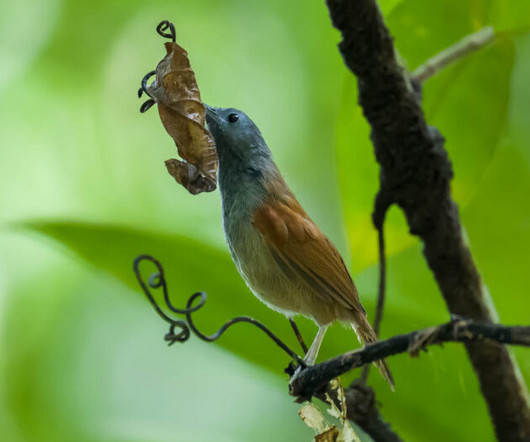Birding Sepilok, Borneo (Part 1)
10,000 Birds
OCTOBER 30, 2023
Anyway, one of the babblers of Sepilok is the Bornean Black-capped Babbler – the result of a split of the Black-capped Babbler (well, at least from a human perspective – the birds themselves are probably quite nonchalant about it). Are these the paper mills one occasionally reads about in relation to Chinese research papers?










Let's personalize your content